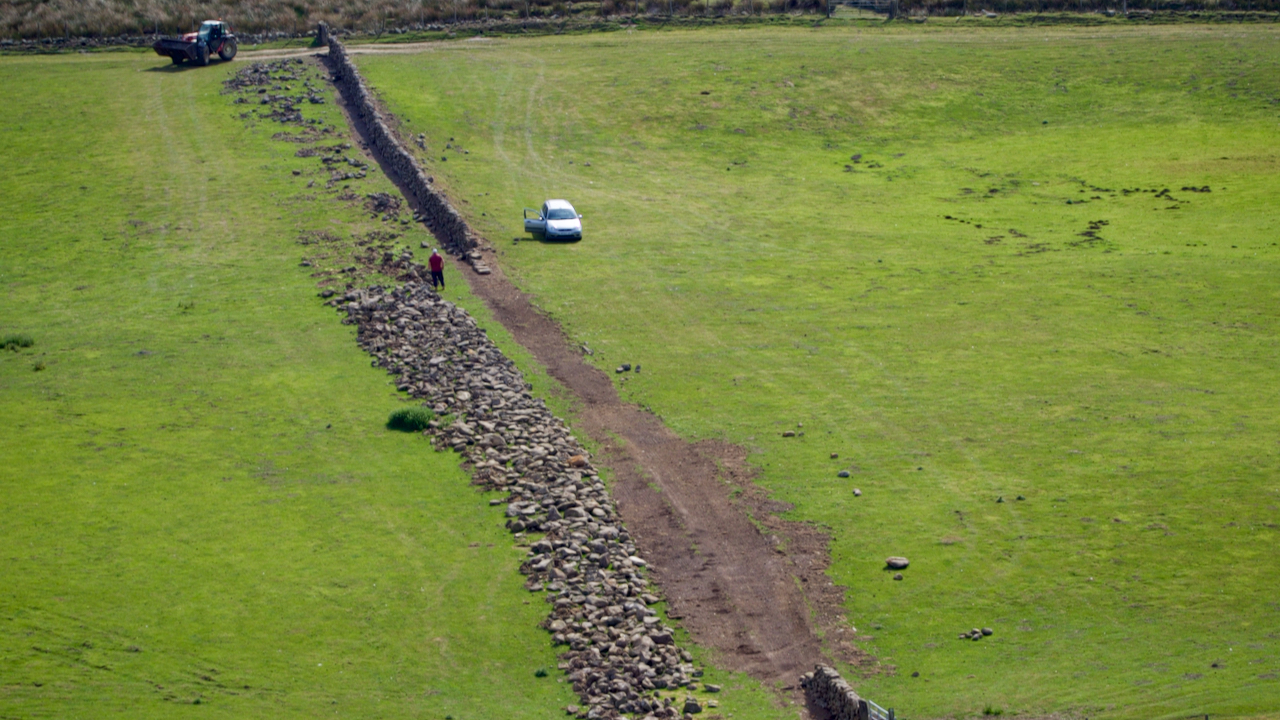This chap has got his work cut out. It looks a well-organised job. But is he rebuilding the wall or selling the stones off for someone’s extension? No, that would be too cynical. More likely he’s working downhill and has completed the upper half of the wall. The laid-out wall doesn’t seem to have been graded (heaviest foundation stones closest to the line, light coping stones furthest away). Hark at me, an expert talking. I’ve only worked on small sections of repairs. Interesting though; must make another trip down Sleddale next week to see how he is getting on.
Rebuilding a dry stone is very labour intensive work. It would be far cheaper to sell off the stone and knock up post and wire fencing. Dry stone walls provide wildlife habitats and shelter for stock as well as reducing soil erosion. The National Park provides grants to help toward wall restoration.
Sleddale Beck is a tributary of the River Esk. The farm is isolated and lonely. The renowned archaeologist Frank Elgee called it an ‘island farm’ in the moorland sea. [Ref014] The name is Old English ‘slaed‘, meaning a wide flat valley, although I’ve seen flatter valleys.
Something there is that doesn’t love a wall,
That sends the frozen-ground-swell under it
And spills the upper boulders in the sun,
And makes gaps even two can pass abreast …
From ‘Mending Wall’ by Robert Frost

Leave a Reply